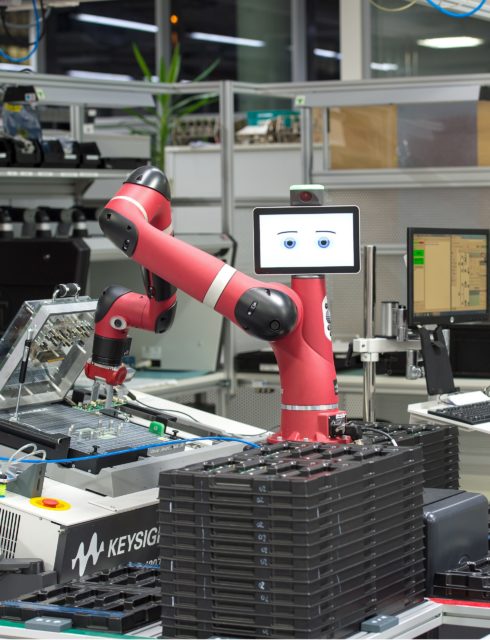Rethink Robotics closes shop. Long live collaborative robots #makerbusiness
The first collaborative robot (cobot) I saw was Baxter and I was sure it was going to change the world.
We’d had industrial robots for some time — these are precise, super efficient and effective robots, but they generally perform highly specialized tasks and shouldn’t be anywhere near people. They are often better and more efficient than their human counterparts, but have been relegated to repetitive jobs, both because of engineering limitations and safety concerns.
Baxter, Rethink Robotics’s cobot, was one of the first major steps in breaking these boundaries and taking robotics into a new frontier. Indeed, a cobot is a collaborative robot, defined by its ability to work safely alongside human counterparts.
“In order for robots to work more productively, they must escape from their cages and be able to work alongside people,” said Kent Massey, the director of advanced programs at HDT Robotics. “To achieve this goal safely, robots must become more like people. They must have eyes and a sense of touch, as well as the intelligence to use those senses.”
Rethink Robotics brought us a robot that is more human. We’re not quite at Westworld yet, but Baxter is able to interact with the world in ways Massey outlined. Perhaps the most impressive aspect of Baxter was that it could be programmed without code and just by being shown a task and having its arms manipulated into executing that task. This enables it to perform a wide variety of different functions and roles.
The market of cobots was not ultimately one that Rethink Robotics was able to navigate, but be sure that it has left an indelible mark on the industry. In 2018, more than 6 years after the birth of Baxter, both the capabilities and expectations of our robot friends have grown immensely: see driverless cars or the variety of other cobots on the market.
And while we are feeling some of the reverberations caused by the innovative Baxter and Rethink Robotics, the recent developments are likely only the tip of the iceberg. It will be very exciting to see the next few iterations of this technology and where we end up in even just a few more years.
Read more about Rethink Robotics here.
